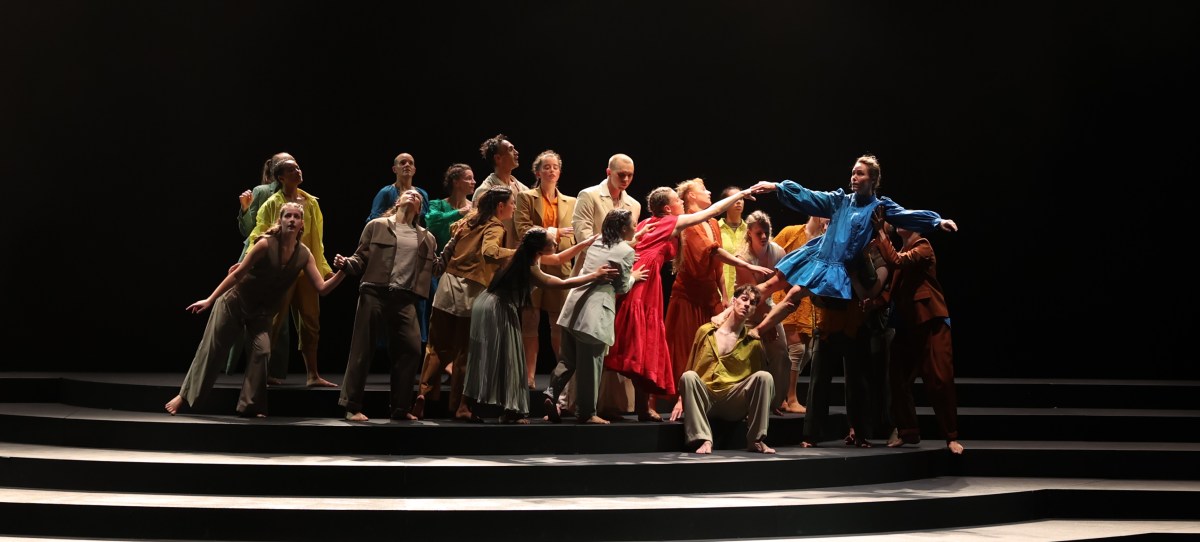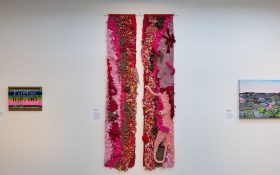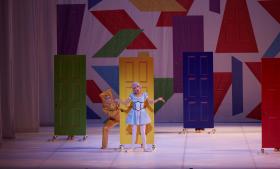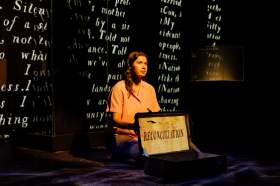Dante Alighieri’s The Divine Comedy journeys through hell, purgatory and paradise. Originally set in the year 1300, this classic poem has been timelessly reimagined by Co3 Contemporary Dance as a redemptive journey of connection, transcendence and a quest for meaning. The roles of Dante and Virgil are distributed across various dancers, rather than embodied by specific individuals – emphasising unification and the shared experience of life’s journey. Three distinct sections (Inferno, Purgatorial and Paradiso) are telegraphed by unique modes of lighting, music, costume and movement.
Low notes and descending darkness transport the audience to a dark place. A graduated stage leads to a hellish horizon, smokey and orange. This is Hell. A lone dancer appears, ascending the staircase with jolting movements. More figures arise from the smokey gloom, moving to the sound of strings and rhythmic tapping. Clad minimally in beige to simulate nudity, these tortured souls clamber over one another, a writhing pit of bodies growing in number and speed. A protracted build-up elicits a state of quasi-anxiety, like waiting for a beat that refuses to drop until the moment you’ve given up all hope of an aural resolution. Silent slow motion screaming speaks of the human condition, encased in movements both jerky and fluid, throughout Inferno.
Purgatory is marked by brighter lights and faster music. Additional costume elements appear over beige underclothes, in shades of greens, blues, oranges and browns. Looser sounds, fabrics and motion signify a change in state, with splashes of warmth. Tension between opposites and torturous inner conflict are expressively portrayed through mass movement, replete with reaching, grasping, chasing and grabbing. The dancers lean on one another. Every movement carries its own weight, along with the weight of its symbolic meaning.
Paradise floods the stage with light, intense at first, then muted and golden, as a blue-clothed figure descends steps. Others arrive, dressed in rich colours, greeting and literally elevating one another. Lighting, costume and movement all deliver an atmosphere of peace. With no single focal point on stage at all throughout, there is a lot going on, moving from chaos to grace in a subversive act of gradual opposite-entropy.
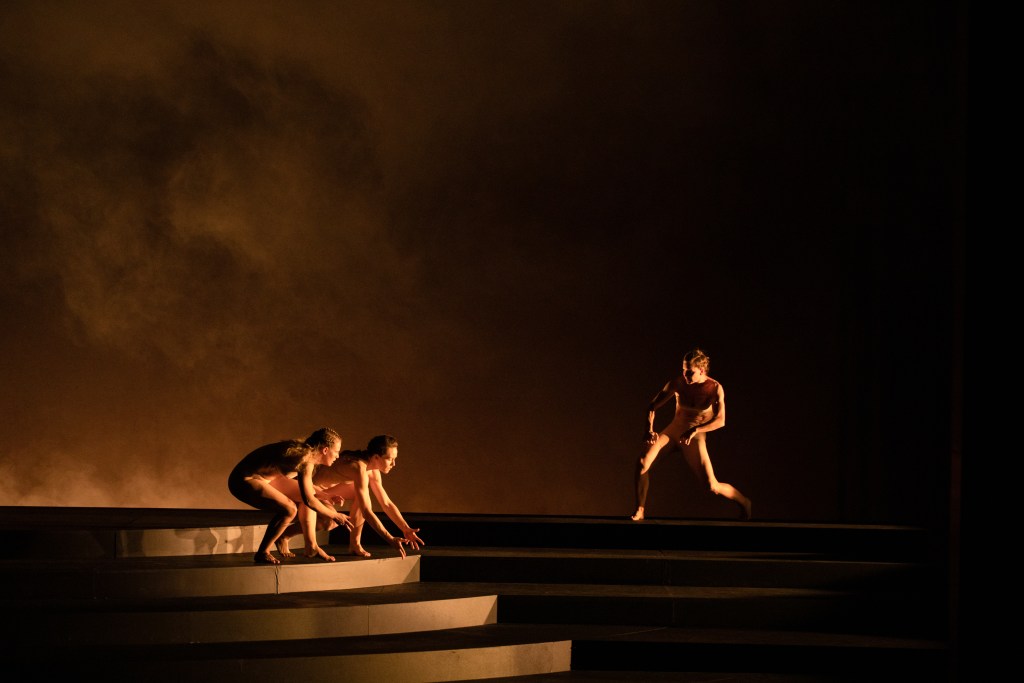
Raewyn Hill’s directorial expertise utilises the descending levels of the stage to their full potential, with bodies functioning as backdrops, props and amalgamated characters. Sets of contrast (stillness and movement, calm and chaos, tension and release) abound in movement, music and mood. Hill’s imaginative and symbolic choreography combines with inventive stage design to create a surreal allegorical exploration of transformation.
Iain Grandage’s composition, commissioned for this production, expertly expresses atmospheric tone, pulsing invisibly around the gyrating bodies. Some notes are uncomfortably high, but only when thematically appropriate.
Mark Haslam’s lighting design makes good use of fog and depth, complete with dramatic wall shadows hinting at Plato’s cave allegory.
Read: Dance review: Angela Goh Axe Arch Echo, AGNSW
The skill of the dancers (from both Co3 and Western Australian Academy of Performing Arts’ Link Dance Company) is immediately apparent and consistently impressive. Their performances are deeply hypnotic, with stunning execution across the board.
It is a rare joy to see classical literature transposed to the mediums of music and movement. This powerful example of visual storytelling will resonate deeply within human souls, tortured or otherwise, and pilgrims in the middle of the journey of their lives.
Architect of the Invisible, Heath Ledger Theatre Centre, State Theatre Centre of WA
CO3 Dancer and Link Dance Company (WAAPA)
Deviser, Director and Costume Designer: Raewyn hill
Composer/Musical Arranger: Iain Grandage
Set Designer: Tyler Hill
Production Manager and Lighting Designer: Mark Haslam
Dramaturg/Writer: Richard Longbottom
Literary Scholar and Adviser: Professor John Kinder
Rehearsal Director: Laura Boynes, Sam Coren
Cultural Adviser: Ian Wilkes
Stage Manager: Sophia Morgan
Assistant Stage Manager: Riley Billyeald
Dancers: (Co3) Francesca Fenton, Campbell Gateley, Zendra Giraudo, Storm Helmore, Alex Kay, Alice Kell, Sean MacDonald, Macon Escobal Riley, Russell Thorpe, Ella-Rose Trew, Zachary Wilson (Link Dance Company) Madilynn Bayliss, Aly Byrne, Elizabeth Chapman, Annmarie Clifton-James, Ebony Cunliffe, Lara Dorling, Chelsea Goodchild, Amelie Ladyman, Keana Mislang, Hannah Mitchell, Sophie Sibbons, Kailyn Tang
Architect of the Invisible is being performed from 11-15 October 2023. Tickets $30-$75.
